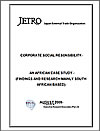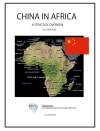BOP Report(Bottom of the Pyramid)
All data are collected in the Fiscal Year of 2008-2009.
6. Creating Buying Power
According to the International Labour Organization’s World Employment Report 2001, nearly a billion people — roughly one-third of the world’s work force — are either underemployed or have such low-paying jobs that they cannot support themselves or their families. Helping the world’s poor elevate themselves above this desperation line is a business opportunity to do well and do good. To do so effectively, two interventions are crucial — providing access to credit, and increasing the earning potential of the poor. A few farsighted companies have already begun to blaze this trail with startlingly positive results.
Commercial credit historically has been unavailable to the very poor. Even if those living in poverty had access to a bank, without collateral it is hard to get credit from the traditional banking system. As Peruvian economist Hernando de Soto demonstrates in his path breaking work, The Mystery of Capital: Why Capitalism Triumphs in the West and Fails Everywhere Else, commercial credit is central to building a market economy. Access to credit in the U.S. has allowed people of modest means to systematically build their equity and make major purchases, such as houses, cars, and education.
The vast majority of the poor in developing countries operate in the “informal” or extralegal economy, since the time and cost involved in securing legal title for their assets or incorporation of their microenterprises is prohibitive. Developing countries have tried governmental subsidies to free the poor from the cycle of poverty, with little success. Even if the poor were able to benefit from government support to start small businesses, their dependence on credit from local moneylenders charging usurious rates makes it impossible to succeed. Local moneylenders in Mumbai, India, charge interest rates of up to 20 percent per day. This means that a vegetable vendor who borrows Rs.100 ($2.08) in the morning must return Rs.120 ($2.50) in the evening.
Extending credit to the poor so they can elevate themselves economically is not a new idea. Consider how I.M. Singer & Company, founded in 1851, provided credit as a way for millions of women to purchase sewing machines. Very few of those women could have afforded the steep $100 price tag, but most could afford a payment of $5 per month.
The same logic applies on a much larger scale in Tier 4. Consider the experience of the Grameen Bank Ltd. in Bangladesh, one of the first in the world to apply a microlending model in commercial banking. Started just over 20 years ago by Muhammad Yunus, then a professor in the Economics Department at Chittagong University, Bangladesh, Grameen Bank pioneered a lending service for the poor that has inspired thousands of microlenders, serving 25 million clients worldwide, in developing countries and wealthy nations, including the United States and Great Britain.
Grameen Bank’s program is designed to addresses the problems of extending credit to lowest-income customers — lack of collateral, high credit risk, and contractual enforcement. Ninety-five percent of its 2.3 million customers are women, who, as the traditional breadwinners and entrepreneurs in rural communities, are better credit risks than men. Candidates for loans must have their proposals thoroughly evaluated and supported by five nonfamily members of the community. The bank’s sales and service people visit the villages frequently, getting to know the women who have loans and the projects in which they are supposed to invest. In this way, lending due diligence is accomplished without the mountain of paperwork and arcane language common in the West.
With 1,170 branches, Grameen Bank today provides microcredit services in more than 40,000 villages, more than half the total number in Bangladesh. As of 1996, Grameen Bank had achieved a 95 percent repayment rate, higher than any other bank in the Indian subcontinent. However, the popularity of its services has also spawned more local competitors, which has cut into its portfolio and shrunk its profits over the past few years.
In addition, Grameen Bank’s rate of return is not easy to assess. Historically, the bank was an entirely manual, field-based operation, a structure that undercut its efficiency. Today, spin-offs such as Grameen Telecom (a provider of village phone service) and Grameen Shakti (a developer of renewable energy sources) are helping Grameen Bank build a technology infrastructure to automate its processes. As the bank develops its online business model, profitability should increase dramatically, highlighting the importance of information technology in the acceleration of the microcredit revolution.
Perhaps the most pertinent measure of Grameen Bank’s success is the global explosion of institutional interest in microlending it has stimulated around the world. In South Africa, where 73 percent of the population earns less than R5,000 ($460) per month, according to a 2001 World Bank study, retail banking services for low-income customers are becoming one of the most competitive and fast-growing mass markets. In 1994, Standard Bank of South Africa Ltd., Africa’s leading consumer bank, launched a low-cost, volume-driven e-banking business, called AutoBank E, to grow revenue by providing banking services to the poor. Through the use of 2,500 automated teller machines (ATMs) and 98 AutoBank E-centres, Standard now has the largest presence in South Africa’s townships and other under-serviced areas of any domestic bank. As of April 2001, Standard served nearly 3 million low-income customers and is adding roughly 60,000 customers per month, according to South Africa’s Sunday Times.
Standard does not require a minimum income of customers opening an AutoBank E account, although they must have some regular income. People who have never used a bank can open an account with a deposit of as little as $8. Customers are issued an ATM card and shown how to use it by staff who speak a variety of African dialects. A small flat fee is charged for each ATM transaction. An interest-bearing “savings purse” is attached to every account to encourage poor customers to save. Interest rates on deposits are low, but superior to keeping cash in a jar. Sunday Times also reported that Standard Bank is considering a loan program for low-income clients.
Computerisation of microlending services not only makes the overall operation more efficient, but also makes it possible to reach many more people — lending money to individuals with no collateral and no formal address. Since there is lower overhead and little paperwork, AutoBank’s costs are 30 to 40 percent lower than those at traditional branches.
At the 1999 Microcredit Summit, the United Nations, in conjunction with several major MNCs, such as Citigroup Inc. and Monsanto Company, set a goal of making basic credit available to the 100 million poorest families in the world by the year 2005. Unfortunately, the success of this undertaking has been slowed by high transaction costs, a lack of automation, and poor information and communications infrastructures in rural areas.
To address these issues and accelerate the development of microlending, French banker Jacques Attali, the founding president of the European Bank for Reconstruction and Development and a former chief aide of French President François Mitterand during the 1980s, has created PlaNet Finance. Its Web site, www.planetfinance.org, links thousands of microcredit groups worldwide into a network to help microbanks share solutions and lower costs.
Ultimately, the development of an automated solution for tracking and processing the millions of small loans associated with microlending should be possible. If processing and transaction costs can be reduced enough, they can then be bundled together and sold in the secondary market to multinational financial institutions like Citigroup. This would greatly expand the capital available for microlending beyond the current pool from donors and governments.
In the United States, microlending has also taken root over the past decade in poor urban neighborhoods. For example, the ShoreBank Corporation, formerly South Shore Bank, has demonstrated the profitability of banking for the poor in Chicago’s troubled South Side. Project Enterprise, a Grameen-like program based in New York City, is aimed at minority entrepreneurs.
Several multinational banks are beginning to offer microbanking services in developing countries. Citigroup, for instance, is experimenting in Bangalore, India, with 24/7 services for customers with as little as a $25 on deposit. Initial results are very positive.
目次
- 1. Reperceiving Business from the Bottom Up
- 2. Bop in Brief
- 3. Four Consumer Tiers
- 4. The Invisible Opportunity
- 5. Tier 4 Pioneer
- 6. Creating Buying Power
- 7. Shaping Aspirations
- 8. Improving Access
- 9. Tailoring Local Solutions
- 10. Putting It All Together
- 11. A Common Cause
- 12. BOP Experiments in the Field
- 13. A BOP Typology
- 14. What's Next for BOP?
- 15. How to Get Started: The Conceptual Framework for BOP Innovation
- 16. BoP Conferences
- 17. Case Studies and Relevant Reference Material
- Bibliography




